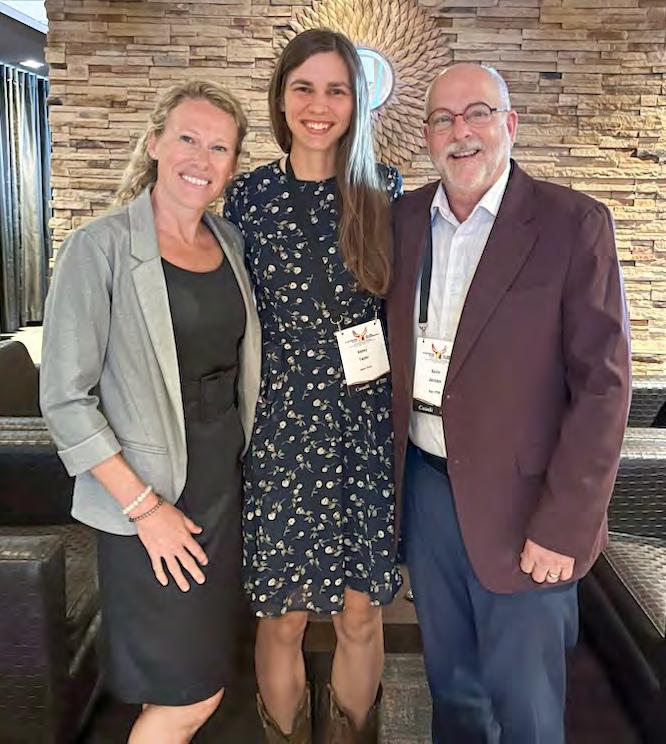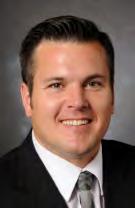


































■ by Joe Konecny Local Journalism Initiative reporter,
The Aylmer Express
Ian Begg wonders whether the 23-acre woodlot his family has surrendered to the City of St. Thomas’ new industrial park will outlive the technology that inspired clear-cutting the other 150 forested acres in the city’s expanding factory district.
“I take a longer perspective on these things, because I’ve been around for a long time, and as an archeologist, I think of what’s going to happen a hundred years or a thousand years from now,” Mr. Begg, 78, said in a recent interview.
His grandmother’s 100-acre farm on Edgeware Line – an integral component of the family’s near-200-year legacy in Elgin County – was among those acquired through annexations for the PowerCo-Volkswagen plant to be built in St. Thomas’ 1,500-acre industrial park by 2027.
Mr. Begg sold the farm, then paid the City an undisclosed sum to preserve the woodlot in perpetuity. He’s the only farm owner in the area who negotiated saving wetlands or forests.
Even so, Mr. Begg still grapples intellectually with the ‘big picture’ trade-off between a well-established Carolinian forest and a new electric vehicle battery plant that may not operate much longer than the Ford assembly plant’s 50-year tenure in Southwold.
“There’s a sentimental attachment, but nobody can stop it, it’s this great big steam roller,” he said. “I’m hoping that someday, once the dust settles, that the city will turn it into a safely usable public park and maintain it.
“I guess that (a park) is the best I can hope for now,” said Mr. Begg. “I hope that it may well outlast the industry. The Ford plant was here for nearly 50 years. It’s gone now. Who knows what will happen to the battery buildings.”
Volkswagen announced March 13, 2023 that it will build the German motor vehicle manufacturer’s first overseas “gigafactory”


in a controversial 1,500-acre industrial park in the city’s north-east end.
Ontario Bill 63 – the St. Thomas-Central Elgin Boundary Adjustment Act – expanded the St. Thomas boundary and annexed farmland, wetlands and woodlots, worth hundreds of millions of dollars, from Central Elgin.
“It’s kind of ironic, supposedly battery-driven cars are environmentally good,
This Month In Elgin • July 2024
Publisher: John Hueston
Design & Layout: The Aylmer Express
Front Cover Photo: Joe Konecny
Editor: Brett Hueston
but the destruction caused in the mining, all these earth movers, all the carbon … for all of that, and they don’t know what they’re going to do with the batteries afterward when they’re finished. That’s not the be all and end all. It’s a different kind of transportation, but it’s not perfect.
“You don’t begrudge the community the jobs,” he added. “That’s kind of their (developers’) ace in the hole. That makes sense. My problem is why do they need so much land. I know it’s a big factory, but why not go vertical and not waste so much land and take away that topsoil. They’ve got mountains of topsoil now. They don’t know what to do with it.”
In 1831 four inter-related families – the Andrews, Gilberts, Penhales and Westlakes – sailed from Devonshire, England, and bought farms along what was then called North Edgeware Road, now Edgeware Line. By 1900 their descendants had accumulated over 3,000 acres of land in the region.
Mr. Begg’s grandmother Sarah Louise Penhale married Lachlan Tisdale and farmed the Edgeware property. When Clark McDougall painted his impressions of their barn, he called it the Tisdale Barn.
Ian Begg’s parents were Donald and Ilene Begg. Donald Begg was a Jersey cattle farmer on Fingal Line and served as President of the Ontario Jersey Breeders in 1963. Ilene Begg lived on the Edgeware farm with her mother until the mud house burned down in 1934. Ian Begg now has only faded photos of the home.
“I was proud to be the last descendant of the immigrant families to own any of the original properties, my grandmother Penhale’s farm, and I had always hoped to be able to celebrate two centuries of one family occupation in 2031,” said Mr. Begg. His grandmother died in 1933. He is the last of his great grandparents’ branches of the Tisdale and Penhale families.
Part of the complicated Edgeware land
continued on page 4
This Month In Elgin is a monthly magazine focusing on business, culture & lifestyle issues and includes Business Beat, the St. Thomas & District Chamber of Commerce newsletter. The publication is available at no charge at locations around Elgin County, as well as distribution to businesses and selected households.
transaction included Mr. Begg’s negotiations with St. Thomas Economic Development Corporation Chief Executive Officer Sean Dyke.
“We agreed with one of the sellers (Mr. Begg) to protect one of the woodlots, as it wasn’t required for development and is a nice feature for the park,” Mr. Dyke said in an interview. “It will be integrated with trails around it, but mostly it’s just maintaining green space within the overall industrial park.”
Describing the process leading up to the 2022 annexation of his grandmother’s farm, Mr. Begg said: “I was contacted by a real estate person from Kitchener, somebody I’d never heard of before, a company I’d never heard of before, saying everything had to be absolutely confidential.
“I did not sign the non-disclosure agreement (NDA) but many people did,” he added.
He was told only that “there was a big project.” Given his family’s legacy here, Mr. Begg was “very much” reluctant to enter into negotiations and “I went to Greece.”
When he returned from vacation, “It was an ongoing discussion,” he said. “After a while, I was dealing more directly with Sean Dyke than the real estate man. I didn’t want to part with it at all of course and then there was the 23 acres of woodlot, and I didn’t see why they needed (that) and I didn’t know how devastating they were going to be to all the other woodlots. But basically, I paid them a lot of money not to cut it down. I donated the money. I gave the acres to the city.
“I better not” say how much he paid the city, added Mr. Begg. “They agreed in a contract in black and white that they would not cut the trees down. There have been some adjustments but basically 23 acres of woodlot













Esteemed Canadian painter Clark McDougall (November 21, 1921 to August 17, 1980) was well-known for his black enamel style. Born in St. Thomas, his impressions of the Tisdale Barn were well known along North Edgeware Road. (Contributed photo)
survived.”
“The City wasn’t opposed to it (preserving the woodlot),” he said. “I guess, nobody else had suggested it, among the other landowners. I guess I’m the only one that did, apparently, but basically, I bribed them not to cut the trees down. I had evaluations done on the property and they used that.”
The transaction and the North Edgeware farming community are all a memory now. “There used to be a barn on the farm. We found somebody was living in it.” He also removed the remnants of a squatters’ community from the woodlot before the deal was closed.
“My grandmother’s old home was a mud house, a cob house,

you could sit on the window sills and read, they were so thick,” he recalls. “It was warm in winter and cool in summer. There were about a half a dozen cob houses in the area. The walls were 22 inches thick of clay, trampled by oxen. They’re all gone now except Ye Olde Forge and Anvil in Sparta.
“The back kitchen was frame, and it caught fire back in 1934 and burnt down, so they pushed the walls in back in ’34. There was no house on the farm after that and the barn was standing.
“Where the underground water reservoir was (at the rear of the original farm), they confiscated that land from us back in ’69 for the water system. The
continued on page 5

Ontario Water Resources Commission expropriated it,” said Mr. Begg. “It supplies the water systems for St. Thomas and London. They took 19 acres. That area was the division between the Catfish Creek and Kettle Creek watersheds.”
Mr. Begg believes his ancestors would lament the loss of farmland. Co-executor for one of his mother’s old girlfriends who died in 2019 at the age of 99-years, Mr. Begg said: “She would be appalled. Her family home was on the north side of Edgeware. She and my mother used to walk to school together. Distant cousins but they were neighbours, they knew one another from year one. She would be just appalled to see this. She loved to plant trees. I can still see her out there planting trees. That’s all gone.
“If the trees and animals had a vote, we’d have a different environment,” he added. “There’s nobody defending them really. I’m just appalled to see how many woodlots have been demolished out there.”
Mr. Begg anonymously supports many other philanthropic projects.
As co-executor of the Donna Evans Bushel Estate, for example, he helped establish an arboretum at the Elevated Park in St. Thomas and at the Jaffa school. They also built the Three Sisters Stage at Springwater Conservation Area.
His background includes an Associate of Music and Honours B.A. in Latin and Greek at Western, and his M.A. and Ph.D. in Classical Archaeology in Toronto. He lived at the American School of Classical Studies in Athens for three years, where he wrote his
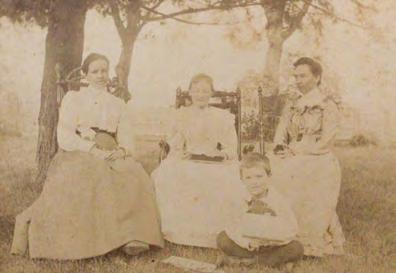
Sarah Louise Penhale (centre), Ian Begg’s grandmother, married Lachlan Tisdale and owned the Edgeware Line property into the ‘30s. Mr. Begg is the last of his great grandparents’ branches of the Tisdale and Penhale families. (Contributed photo)
thesis on Minoan Storerooms in the Late Bronze Age.
He no longer teaches archaeology, but still conducts research on the papers of the late Prof. Gilbert Bagnani, who directed some very significant excavations at Tebtunis in Egypt in the 1930s.
Mr. Begg has excavated in Sicily, Greece and Egypt, directed a survey of a Late Roman and Middle Byzantine site on the Greek island of Karpathos, and supports various Canadian excavations in Greece.
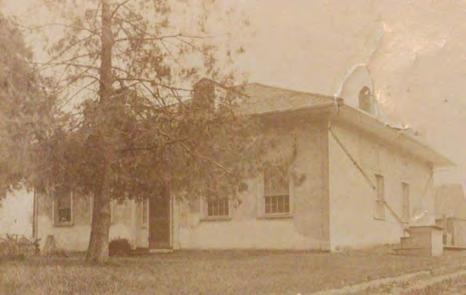


■ by Joe Konecny Local Journalism Initiative reporter, The Aylmer Express
Expansion of the Element5 manufacturing plant at 70 Dennis Road, in St. Thomas, has firmly established the nine-year-old company as one of North America’s leaders in the design, fabrication and assembly of contemporary mass timber structures.
Founded in 2015 in Ripon, Quebec, Element5 built a 130,000 square foot St. Thomas facility in 2020 on 40 acres of land in the city’s north end. Touted as one of the most technologically advanced mass timber plants in North America, it generates about 50,000 cubic meters of cross-laminated timber (CLT) a year.
Work on the St. Thomas expansion started in 2023 and increases the Element5 footprint to over 350,000 square feet, set to produce another 50,000 cubic meters of glue-laminated timber (glulam) a year starting in 2025.
The $100 million total expan-
sion allows Element5 to produce wood beams and columns in addition to panels, serving a broader segment of the $2 billion global mass timber market.
“Our footprint has really started to increase,” Chris Latour, Element5 Vice President of Engineering and Operations, said at a June 21 sod-turning ceremony acknowledging the expansion. “(product demand) is coming from all sectors.
“In 2019, when we started this site, we had about eight people in Toronto and I was the only employee in St. Thomas,” added Mr. Latour. “Now we’re at 137, by end of the year we expect to be above 170, and then, as we launch the second line in the glulam factory, all of that will start to match everything we’ve done in CLT.”
In February, The Hasslacher Group, of Austria, made a strategic investment in Element5 to fuel growth in the North American market and support the St. Thomas expansion. Element5 now calls







St. Thomas its headquarters. Element5 recorded 2023 sales of about $30 million and the company is forecasting $40 million in 2024, and $100 million in 2030.
The sales forecasts reflect optimism generated by a recent Government of Ontario announcement, planning building code changes to speed up housing production, and reduce construction costs. The Province is rewriting regulations to allow mass timber buildings as high as 18 storeys, an increase from the current 12-storeys limit.
“What we did was go out and design the most modular and efficient design for low income housing and we launched that,” added Mr. Latour. “That’s kind of the starting point, the first one being the YWCA building in Kitchener, a four-storey building. Since then, we’ve built multiple others of those in two-storey formats, and now in Hamilton, we’re doing a six storey.”
Mr. Latour said operating in St. Thomas makes sense for Element5 because its necessary supply of wood can be efficiently delivered by rail, and the city’s location on the Toronto-Detroit transportation corridor also streamlines product delivery.
“The big advantage for this area is the quality of employees,” he added. “There are machine operators, CNC (computer numerical control) operators, good maintenance staff, high quality engineers, and we can really fill out our workforce to the maximum capability, which is what we’ve demonstrated.”


The concentration of automation companies in the region, including the automotive sector, serves as a magnet for quality workers, said Mr. Latour. “These teams of employees, they’ve got experience in manufacturing processes, how to operate electronics and computer systems that support the automation, and really manage a manufacturing facility at a high utilization.
“The programs that are offered at the university and at the college levels have been really helpful. Fanshawe and Conestoga have really good technical programs for people that are coming up and want to be a maintenance or engineering technologist. Western, Waterloo, McMaster all have great programs for structural engineering. All those have contributed.”
Element5’s St. Thomas investment is the largest in the city in the last 20 years, according to Sean Dyke, Chief Executive Officer at St. Thomas Economic Development Corporation.
“What it really does for the community is add that prosperity that we’ve been looking for,” added Mr. Dyke. “The City has been very fortunate. The last few years have all been growth years. This is another element of this.
“Local industries are reinvesting in the community and that’s something that we really want to highlight because it shows that there’s a confidence level here, in the employment that they’ve got, the city support that they benefit from, and the surrounding industries that they’re able to utilize,” continued on page 7



he added. “It’s really nice to see the eco system here growing internally.
“We don’t always need big investments like Volkswagen-PowerCo to make the community grow,” he continued. “These are the ones that really grow over time.”
Mr. Dyke said several factors contribute to strengthening the commercial-industrial base in St. Thomas.
“As much as there’s a workforce struggle for some companies, if you’re the right company and you treat people well, it’s not that hard to find labour,” he said. “We’ve got a good solid workforce in this region. You can drive an hour and you can get 1.5 million people to work.
“If you look at where we are situated in the province, location obviously plays a big role. We’re right in the middle of the biggest industrial zone in Canada,” he explained. “There’s nothing else that compares to the Toronto-to-Detroit corridor as far as manufacturing and processing go. Along with that comes good training programs at the colleges and universities.
“It’s not just the labour either,” added Mr. Dyke. “The city has been unbelievably supportive of industry in St. Thomas and trying to do what we can to help them grow and we do that by moving at a rapid pace.
“They’re getting building permits here way faster than a lot of other communities,” he said. “We’re being as supportive as we possibly can as far as providing a level of service that’s more on a
corporate level than on a government level.”
According to industry experts, the family of engineered wood components known as mass timber can be used in construction instead of steel or concrete. Mass timber is currently used to construct everything from tall timber towers and long-span sports arenas, to office buildings, multi-family structures and educational facilities.
Because mass timber products are manufactured using a renewable resource, they have a smaller carbon footprint than steel or concrete. Wood also sequesters carbon and its light weight reduces foundation requirements in construction, saving time, money, and carbon. Mass timber can also be combined with other materials in hybrid configurations designed to meet special loading or lateral requirements.
According to a 2023 Royal Bank of Canada (RBC) research report, mass timber accounted for one percent of all building construction materials in North America. The global mass timber market reached $1.6 billion in 2022 and was forecast to rise to $1.9 billion in 2023. Analysts estimate the market could reach $4.9 billion by 2030. Canada’s share of the global mass timber market was about $379 million in 2023.
Other key take-aways from the RBC research include:
“The building sector is the third most carbon intensive industry in Canada, accounting for 13 percent of all emissions in 2022, or 92 million tonnes (MT) of CO2e. (CO2e signifies the amount of CO2 which would have the equivalent global warming impact.) Canada aims to


Getting the shovel in the ground, for the expansion of Element5 manufacturing plant at 70 Dennis Road in St. Thomas, are: (left to right) Sean Ford, Partner, Dancor; Sean Dyke, CEO, St. Thomas Economic Development Corporation; Matthew MacKenzie, Director of Acquisitions, Nexus; Kelly Hanczyk, CEO, Nexus; St. Thomas Mayor Joe Preston; Chris Latour, Vice President Engineering and Operations, Element5; Patrick Poulin, President and CEO, Element5; Mike Leach, VP Sales, Element5; Elgin-Middlesex-London MP Karen Vecchio; and Alex Gruevski, Vice President of Finance, Element5.
cut that amount to 53MT by 2030.
“Widespread adoption of wood, specifically mass timber, as a substitute or complement to concrete and steel could cut embodied emissions in buildings by as much as 25 percent.
“Mass timber deployment in new apartments, condos, and of-
fice towers could cut emissions by at least 9MT, or nearly 10 percent of the sector’s emissions, by 2030.
“Aside from emissions savings, greater use of mass timber in building construction could conservatively grow the mass timber market by $1 billion by 2030.



■ by Heather Derks
The Solstice has passed, and we are now in the thick of it – every square inch has been planted. The focus is turning to yields, and with soil productivity in mind, I wanted to talk about feeding the microbiome by increasing organic material content.
I think of my soil as being alive, in the same way as a sourdough starter. There are a million little creatures living there. It’s a mini metropolis, and those fellows are hungry. Their food is organic material like compost, manure, mulch, etc., and their waste nourishes our plants. In the same way that you have to feed a sourdough starter, you have to feed soil if you want it to grow food for your family. Mulch also helps keep soil dark and damp, which is its favourite condition. If your soil is empty of nutrients and your plants are looking stunted, perhaps the following tips for rejuvenating can help.
My soil-feeding process is cyclical. In the fall, I top dress with compost and sow cold weather crops such as turnips or rutabaga to keep a living root structure through the winter. If the fall goes long, which ours have been, you get some yield, but even the immature plants will flourish in the spring. Their leaves will be among the first edibles from the garden, and their flowers, once they bolt, will be some of the earliest for polli-
nators, who in turn will help produce seed for your next crop.
The seed pods on my fall-planted cold hardies are ripening around now, just in time for sowing ‘in the wings,’ so to speak. I have mine in pots on my deck so that they are ready to be transplanted once early crops like potatoes are done.
In late winter/early spring, I top-dress with home compost and horse manure, then sow into that a network of radish seeds so that when the radishes grow, they cover the soil. Their roots bring down carbon, and they’re a first, early harvest. Once the radishes are finished, I clear those out and sow the summer crop, making sure to add a good dose of compost tea. I make compost tea by steeping one scoopful of my home compost in a four-gallon bucket of water for 36 hours before applying to the garden. I try to give each of my rows a batch every few weeks through the summer, as well as my pots and containers.
I recently bought a load of screened topsoil for making a new section of garden, and from the way my seedlings came up stunted, I could tell that there wasn’t much nutrition in it. To fix this, I topped with compost and manure under a layer of natural cedar mulch. With the heat wave coming end of June, I also bought a bale of straw at Elgin Feeds and used that to mulch







my whole garden. I did that because I knew I was going to be watering a lot and I wanted to protect my tomato plants from soil splashing up on them because that’s a good way to get blight. The mulch helps the moisture stay in the soil, and as it breaks down, it adds nutrients.
If you’re finding your soil looks dried out or if it’s producing stunted plants, cover it. A layer of organic material under mulch, followed by a drink of compost tea would be my go-to recommendation for how to address it. Little earthbound creatures like worms don’t like venturing often out into the direct sun, but if you put a nice covering on your soil, it gives them the ability to travel to the top where the compost is underneath the mulch so that they can break down the nutrients, providing good food for your plants. If that doesn’t help, try rainwater instead of municipal water, and water well. Whatever you do, don’t give up. Happy gardening!


■ by Keona Petznick
Date: Wednesday, July 24
Sponsor:
Port Stanley Festival Theatre
Site:
Port Stanley Festival Theatre, 302 Bridge Street, Port Stanley
Time:
Sponsor remarks and prize draws start at 6:15
Prizes – Connections – Food & Refreshments Free
Being a university student means I have two places I call home: my hometown of St. Thomas, and my university residence in Ottawa. Growing up in St. Thomas, I attended a French immersion public school and later pursued my second language at a French-first-language high school in London. During my years in high school, I discovered my passion for law and the correctional system. This led me to continue my education at the University of Ottawa, where I study criminology and psychology entirely in French. Ottawa has been a wonderful experience with many great moments, yet every April, I eagerly anticipate returning to St. Thomas and reconnecting with the supportive community there.
When I return to St. Thomas for the summer, it’s a time to reconnect with friends and family whom I’ve missed while away at school. Hearing about their adventures and seeing how they’ve grown as people is always a great part of returning. Even though our time together is limited, reuniting with friends feels like no time has passed at all. Staying connected to my hometown and loved ones is important as I transition through different stages of life, offering a sense of belonging and community support that I carry with me back to school.
In addition to reuniting with loved ones, I am always excited

to discover the new developments in St. Thomas each time I return from Ottawa. The growth in new homes, businesses, and friendships adds a vibrant energy to the community. Exploring new local businesses and trying different cuisines like sushi or Indian food is always a highlight. Plus, I also appreciate returning for the comforts that are not as accessible in Ottawa, such as enjoying a Firehouse Sub or a freshly baked scone from Cobs Bakery.
Above all, nothing can match the community feel that warms my heart when I return home to St. Thomas. Knowing there’s a community that is excited to embrace me again for the summer is truly special. Last summer, I worked at the Central Community Health Centre, where I was supported, encouraged, and welcomed with open
arms. Returning this summer, I found myself once more surrounded by warm smiles from them and many others in the community. Knowing I had members of my community to help me, inspired me to apply for a position at the St. Thomas & District Chamber of Commerce. The Chamber embraced me as their intern, spreading that community love even further. Working with them, I’ve learned much more about my town, and it has deepened my appreciation for the tight-knit community of St. Thomas.
While I cherish my time at the University of Ottawa, making friends, serving as a Student Ambassador, and enjoying my studies, there’s a unique excitement and comfort in returning to my hometown of St. Thomas every summer.
■ by Dan Reith
While standard directors and officers (D&O) policies are designed to protect a wide array of risks, they have their limits. Coverage extensions are used to address these limits, fill gaps and provide organizations with additional protections outside the scope of traditional D&O agreements.
Coverage extensions solve a wide range of problems and can be continually improved to address the changing landscape of D&O liability. This Coverage Insights details a number of D&O extensions you should consider.
With today’s emphasis on corporate transparency and ac-

countability, an organization’s directors and officers face a countless number of exposures. Regardless of your company’s size or mission, the legal costs associated with a lawsuit can be devastating for both the organization and your directors and
officers.
accused the company of diverting contracts and sought direct and consequential damages, including lost profits, punitive damages and attorney fees. As a result, the insured and its directors and officers were taken to court.
Private company D&O insurance in action: The case above alleges a wrongful act—an act that falls directly on the insured’s directors and officers. Thankfully, D&O insurance provides coverage for alleged or actual acts, which helps organizations respond to various types of litigation.



Many wrongly assume that directors and officers (D&O) insurance is only necessary for publicly traded companies. However, privately held organizations can just as easily fall victim to lawsuits that can impact the company, its officers and board, making D&O insurance is a must.
The company: A private flooring installation company worth approximately $20-million. The challenge: A Manitoba-based flooring company with less than 15 employees was recently the subject of a lawsuit. A competing flooring company sued the insured, alleging purposeful contract interference.
Specifically, the competitor

This is particularly important when you consider that the defence costs and mediation expenses for the above case reached $193,000. Without D&O insurance, the small-sized flooring company, as well as its directors and officers, would be forced to pay for the defence out of pocket.
The company: A private company specializing in business process outsourcing.
The challenge: A private company works with several Fortune 500 brands and helps manage their shipping and customer care divisions. Recently, shareholders targeted the private company, alleging fraud
continued on page 11
and misrepresentation. These shareholders claimed they were told the money they invested would be used to acquire smaller enterprises— bolstering the organization’s outsourcing capabilities. Using the shareholders’ money, the
and officers did not conduct the proper due diligence to ensure they were making the right decisions.
Private company D&O insurance in action: Despite their reasonable and best efforts, the directors and officers of the insured company failed in a highrisk, high-reward scenario. As a result, they were sued for negligence and possible fraud.
The company was taken to court—a process that went on for months and led to immense legal expenses. At the end of litigation, the D&O policy limits of $2 million were nearly exhausted, but helped ensure the financial longevity of the company and its leadership.

company would purchase these enterprises with the promise of doubling the original investment. However, when several of these acquisitions failed, shareholders claimed the directors
Many private organizations don’t believe they need D&O insurance. This can be dangerous thinking, as just one D&O claim can drain the personal assets of a company’s leadership team.

The current litigation climate for private companies presents an unending and potentially devastating challenge. Following a financial crisis, error, business interruption or similar incident, management can be held liable. Without the proper coverage, directors and officers would have to face claims
on by competitors, customers, business partners and regulators on their own, likely with minimal success.




■ by Tara McCaulley
Elgin Business Resource Centre has been on the move the last few months, travelling throughout Elgin County. The objective has been to introduce new team members to the areas of Elgin County that we serve, while popping into as many businesses as we can to introduce ourselves and gather feedback on how we can better support businesses.
Elgin County has seven unique communities, with a rich history, from east to west. It is exciting to see the vibrancy of the small and medium sized businesses in many different industries in Southwold, Dutton-Dunwich, West Elgin, Aylmer, Malahide and Bayham. To learn more information about each community, check out elgintourist.com.
What did we learn from business owners while touring? Business owners are looking for support in these areas:



• What do I need to know if I have just started or am starting a business?
• How do I research my market? What business structure should I use?
• What are the “must knows” for starting a business?
• How do I increase my marketing dollars and reach as many customers as possible?
• How do I increase revenue?
• How do I know my product or service is priced correctly?
• How do I create cashflow projections?
• How do I create traffic to my retail store?
• Step-by-step processes for hiring, differences between hiring and subcontracting, training, and retaining employees.
• Finding funding for my business, where do I start?
• How to create a customer experience; what does that mean? How does it differ from customer service?
• How do I read my financial statements?
• Hours of operation – I can’t always make it to EBRC during the day. Are there evening options?
• Some businesses don’t have the capacity to attend workshops but would still like to access the learning.
• How to connect with businesses locally and regionally. EBRC is utilizing this information and creating a new, updated workshop series and schedule. The new workshops will roll out in September and registration will be live by July 17. EBRC is keeping the day and time consistent so it is easier for businesses to plan, and we will be recording them and uploading them to our website so they can be accessed when it is convenient to businesses.
Starting July 4, we are piloting evening shifts to make it easier for businesses to connect. Every Thursday in July and August

we will be open until 8 p.m. for entrepreneurs. We are always open to feedback on how we can help to make operating a business easier for you. Want EBRC to visit your business? Let us know! Have suggestions on workshops or other ways we can help? Don’t hesitate to reach out to Tara at tmccaulley@elgincfdc.ca or 519 633-7597 ext 462.



3-K Leasing Limited
St. Thomas, ON
Phone Number: 519-318-0014
Email: dkelly@3kleasing.com
Contact: Dan Kelly, CFO
Buyer’s Guide Categories: Museums
Products & Services: An amazing antique museum, featuring a large variety of vintage products and antiques from the petroleum industry.

Dominion Lending Centre – Forest City
Funding
St. Thomas, ON
Phone Number: 519-438-4813
Email: Info@RDFS.ca
Website: http://www.rdfs.ca
Contact: David da Camara, Financial Advisor
Buyer’s Guide Categories: Mortgages; Financial Services
Products & Services: Dominion Lending CentresForest City Funding is a mortgage brokerage serving the needs of consumers across Ontario and Canada. Their mission is to provide clients with a friendly, transparent, and convenient mortgage experience catered
to their financial circumstances and goals. The office is located in Southwest London and they live and contribute in St. Thomas and surrounding communities. Being part of the Forest City Funding team being the biggest in Canada, a brand that is synonymous with providing simple, fast, and trusted solutions for the simplest to complex mortgage transactions. Whether you are purchasing as a first time owner or recurring, renewing, looking to refinance, and many other mortgage transactions, they will provide flexibility and guidance specific to your situation.
Master Care
St. Thomas, ON
Phone Number: 647-417-1114
Email: info@mastercare.com
Website: https://mastercare.com/
Contact: Rachel Exley, Business Development Manager
Buyer’s Guide Categories: Cleaning Services
Products & Services: Master Care is more than just a commercial cleaning company. Master Care’s professional cleaning teams take great pride in their work and can handle any cleaning operation at your convenience. Be it daily, weekly, monthly, weekdays, weekends, day or night, Master Care is always here to meet your cleaning needs.

275 Talbot Street, St. Thomas, ON
Phone Number: 519-870-9490
Email: Love_rose85@hotmail.com
Contact: Akram Khodeir, Owner
Buyer’s Guide Categories: Restaurants
Products & Services: Their grilled potato combos are excellent, featuring a tasty sauce and nutritious toppings. The options are creative and the flavors are strong. The service is excellent and the vibe is warm. You can customize your own food at potato express!
Port Stanley, ON
Phone Number: 905-580-0043


Email: rpereira@primerica.com
Website: www.primerica.com/rickpereira
Contact: Ricardo Pereira, Division Leader
Buyer’s Guide Categories: Financial Services; Insurance Services; Investment Services; Mortgages
Products & Services: In 1977, Primerica was founded on a simple idea: Just do what’s right. That concept remains at the heart of everything they do for Main Street families every day. Through their HOW MONEY WORKS materials, they teach people the basics of personal finance because they believe a solid foundation is the key to making healthy money choices. Primerica Financial Services is here to help with all your financial planning needs, including insurances, investments, mortgages and more.





The June meeting for Business After 5 was hosted June 19 by Royal Containers, including tours of their production facility. The July social will be hosted by and held at Port Stanley Festival Theatre on Wednesday, July 24.
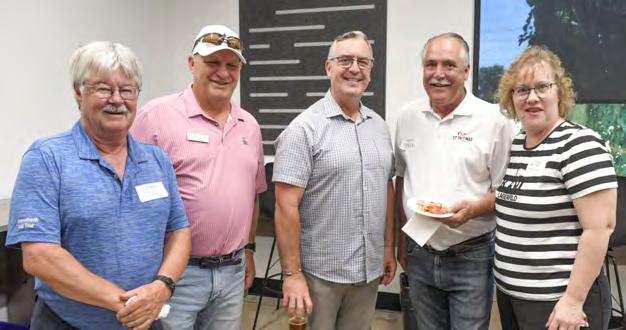



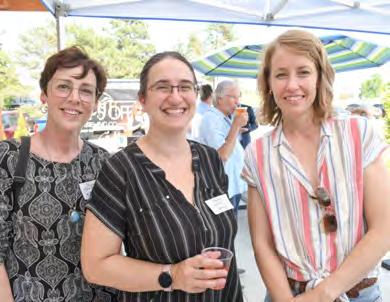


and
Vitamin D deficiency has been linked to osteoporosis, asthma, autoimmune diseases such as rheumatoid arthritis, inflammatory bowel disease, diabetes, disturbed muscle function, and lowered immune system function.
tant during childhood and adolescence. Even the amount of sunlight exposure of the mother while she is pregnant may have implications related to vitamin D status and the risk of developing MS.
■ by Dr. Greg Johnston
Many people are aware that Vitamin D is very important for the growth, development and maintenance of our bones. Vitamin D3 supplementation has been well established as an important component in the prevention of osteoporosis in adults. Children may be susceptible to developing a bone softening disease called rickets if they do not have sufficient levels of vitamin D. The Canadian Paediatric Society recommends a vitamin D intake of 800 IU (international units) for infants in the first year in far northern communities and 400 IU per day in the more southern regions of Canada. The Institute of Medicine recommends 200 IU per day for children between the ages of one and eight.
Balance problems, loss of hand and finger dexterity leading to problems writing, buttoning a shirt and other fine motor tasks are common symptoms of cervical spondylotic myelopathy (CSM). This is a condition that develops insidiously over time as degenerative changes in the cervical spine (neck) cause pressure on the spinal cord and related structures. CSM is the most common form of non-traumatic spinal injury in adults but, unfortunately, the identification and diagnosis of the condition is often delayed.
ing to difficulty writing and other intricate hand movements. The common symptoms in the lower extremity include weakness, exaggerated reflexes (hyperreflexia) and hypertonia (increased muscle tone).
As we enter the month of November, our exposure to sunlight of course decreases. Unfortunately, this is one of the major sources of vitamin D. A cross sectional study done by Health Canada indicated that about 40% of Canadians fell below the minimum recommended levels of vitamin D needed for optimal bone health during the winter months. Keep in mind this is only looking at one component, specifically bone health. The immune system component that we have discussed may require greater amounts of vitamin D than is required for minimum bone health. The good news is that besides sun exposure we can also increase our vitamin D levels through diet and supplementation.
Besides the classic function of Vitamin D in helping to support the skeletal system, more and more evidence is mounting that it also plays a role in immune system function. Individuals with lower vitamin D levels may be more susceptible to upper respiratory tract infections. A study in Finland of 800 military recruits found that those with lower vitamin D levels lost significantly more days from active duty due to upper respiratory tract infections than recruits with higher vitamin D levels. There have also been studies that suggest a greater susceptibility to contracting influenza when vitamin D levels are not sufficient to support the immune system.
CSM results from the slow and insidious process of the development of osteoarthritis in the spine which is more correctly called spondylosis, a diffuse condition that includes degeneration of the spinal discs, the spinal joints (facet joints and uncovertebral joints) and the related connective and soft tissues. This process involves loss of disc height, growth of bony spurs and thickening of the connective tissues leading to a decreased size of the spinal canal as well as the holes in the side of the spinal column (foramina) where the nerve roots exit.
On initial perusal, it is easy to see that many of these symptoms might be dismissed as normal aging and as a result early diagnosis may be delayed. CSM is a serious degenerative and often progressive neurological condition so early identification is crucial to avoid permanent nerve damage. Patients presenting with symptoms de scribed above should have imaging done to confirm the diagnosis.
Regular x-rays, CT scans and MRIs can all be used to evaluate spinal canal narrowing and related pathological changes in the verte bral column.
More recently, there has been mounting research
The spinal cord contains numerous neuropathways that connect the brain to the rest of our bodies. With CSM there is generally a distinct order to the way that symptoms develop that corresponds with the areas of the spinal cord that are affected. In the upper extremity the common symptoms include weakness, muscle atrophy, muscle twitching, reduced reflexes and decreased muscle tone. There is decreased hand dexterity lead-
Unfortunately, moderate to se vere CSM is considered a surgical disease. There is very little scien tific research comparing operative versus non-operative outcomes but it is quite clear that if left untreated the condition generally progresses and leads to significant impairments in activities of daily living. With mild CSM non-sur gical treatments including super vised structured rehabilitation may be an option but if there is no improvement then again, surgery may be the only option.
As we progress through the winter months it is important to pay attention to the amount of vitamin D that you are getting to help you to fight off the common infections during the cold and flu season. Foods that are sources for vitamin D include fish especially salmon, fortified foods such as orange juice, and dairy products and eggs. Supplementation with a good quality vitamin D product and even good old fashion cod liver oil may also be a good idea.
described above be sure to seek out a thorough evaluation and possible referral to a specialist. The second is a reminder that it is important to take care of your spine over a lifetime. Starting early to seek advice from a musculoskeletal expert like a chiropractor or physiotherapist to help correct
and maintain a healthy spine can lessen the likelihood of developing serious degenerative conditions later in life thereby preventing conditions like CSM.


The purpose of this article is two-fold. The first is to provide information about a potentially serious condition that all too often may be overlooked delaying potentially important treatment options in the early stages. If you or anyone close to you is displaying symptoms as


■ by Paul Bode
Estate planning is more than just a legal exercise – it is a crucial step in ensuring your legacy is preserved and your loved ones are taken care of after you have gone. People set up estate plans to provide for beneficiaries, protect minors and minimize legal and tax issues.
Here are seven tips for creating an estate plan:
1. Understand the Importance of Estate Documents.
Key estate planning documents include:
• Will: outlines your wishes regarding asset distribution, appoints an executor, and nominates guardian(s) for minor children.
• Power of attorney (POA) for property and a POA for personal care: empowers a trusted individual(s) of your
choice to make decisions relating to your property and finances or health care decisions if you are incapacitated.
• Living Will: details your medical treatment wishes.
• Beneficiary designations: allows for certain assets, such as registered accounts and life insurance policies, to transfer directly to a named beneficiary outside of your Will.
2. Start Planning As Soon As Possible
It’s never too early to start your estate plan. POAs ensure timely medical decisions and financial management if you become incapacitated. If you pass away unexpectedly without a Will, your estate will be distributed according to provincial intestacy laws, which may not match your wishes.




3. Assemble your team of professionals
Having a trusted team of professionals to help you is indispensable. Your team can include:
• Estate planning lawyer— provides legal advice and drafts legal documents.
• Tax professional— recommends steps and structures that may reduce taxes at death.
• Financial advisor—verifies that your investments and named beneficiaries align with the estate plan.
4. Determine when you want your POA’s to become effective
A POA for personal care can be effective when you cannot make health care decisions yourself. You can also decide when to make POA’s for property or personal care become effective. Some people make it effective immediately, while others activate it only during periods of incapacity.
Ensure Consistency in your Estate Planning Documents
Some Wills may contradict named beneficiaries on registered accounts and life insurance policies. To ensure your estate aligns with your wishes, all documents should be consistent.

6. Talk to loved ones about your estate plan
Regularly discussing your estate plan with those involved can help them better understand your wishes and clarify their roles. Verify whether your named executor(s), POAs designate and guardian(s) of minor children, are willing to serve. If they cannot, a court may appoint someone else causing delays and potential misalignment with your wishes.
7. Ensure your documents are accessible
To make their job easier, an executor should know where important documents are kept. Be sure to include digital assets such as online accounts, social media profiles in your estate plan. This helps your executor efficiently manage these assets after your passing.
Estate planning can be complex, so a team approach is best.
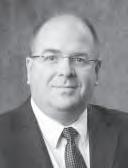
■ by Rob Perry
A new six-unit, 38,000 squarefoot commercial industrial facility, focused on local entrepreneurs as tenants, is to be built over the next year on land on the west side of Hacienda Road in Malahide.
Several years ago, Malahide Township purchased 20 acres of land across from the Ontario Police College.
The Malahide land sold quickly, and one of the buyers was Peter Guenther of Guenther Homes, a company based in Malahide.
Mr. Guenther said he built his first six-unit building on his new property in 2021.
He’d originally considered just a two-unit facility for his own company’s uses, but he kept hearing from local subcontractors and other small businesses that were looking for space that could accommodate industrial uses.
“The demand was there,” and the first building, also six units and 38,000 square feet, filled up very quickly.
What was more, as soon as the pouring of the foundations started for that initial building, even more inquiries came in about rental space.
In addition, he learned for the first time through Malahide Administrator Nathan Dias that the township and Elgin County jointly offered a property tax reduction program.
Usually, as soon as a new building was completed it was assessed and almost immediately faced a tax hike based on the increased property tax value of the land.
However, the property tax

Economic Development and Strategic Initiatives Manager Carolyn Krahn, left, county Warden Ed Ketchabaw, mayor of Bayham, Peter Guenther of Guenther Homes, Malahide Mayor Dominique Giguère, Malahide Community Relations and Economic Development Manager Steve Tripp and township Administrator Nathan Dias stand on the site of what will be a 38,000-square-foot, six-unit commercial-industrial hub on the west side of Hacienda Road, across from the Ontario Police College, on Wednesday, June 26. (Rob Perry photo)
incentive program meant that a development paid only 10 percent of the additional tax that would normally be charged in the first year, 20 percent in the second, 30 percent in the third, 40 percent in the fourth and 50 percent in the fifth.
After that, the full tax increase would be implemented.
In the case of the proposed new building, the cost in lost tax revenue to Elgin and Malahide over five years was estimated at $108,000.
Elgin Warden Ed Ketchabaw, mayor of Bayham, said the tax break was meant to encourage developments.
The county first adopted a “Community Improvement Plan” which, under provincial regulations, allowed the offering of such incentives, in 2015, and the actual reduction program was put in place in 2018.
However, to date, just three developers have applied for and received approval for the tax bill


been started by township council before she had joined it.
She appreciated the vision council members had shown in originally buying the site, then designating it for industry and commerce.
“It checks all our boxes,” she said of Mr. Guenther’s latest plan. The township sought “responsible, proportional growth” based on what residents had told council in recent years.
reduction.
That was one reason, Elgin County Economic Development and Strategic Initiatives Manager Carolyn Krahn said, that a press conference was held on the site of the future building.
She was pleased as well by the “amazing entrepreneurs” who had already made homes in the first building, and those who would be able to find space in the new one.
Mr. Guenther said when he’d started his company, he did so out of his garage, but would have been glad to have space available more suited for the work involved.

Malahide Mayor Dominique Giguère said she was thrilled to see the success of the commercial-industrial site, which had
He noted that, even after the second hub went up, he still had over four acres of vacant land he hoped to develop in the future.






■ Port Stanley Festival Theatre
Port Stanley Festival Theatre has provided a behind-the-

scenes peek at set design, and description on how some of the magic is made.



From the meticulously crafted props to the awe-inspiring set designs, every element on stage
set designer Joe Recchia, the task of creating the tree began. The tree has a wooden skeleton
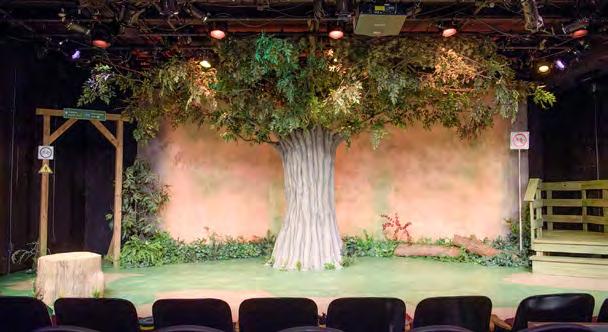

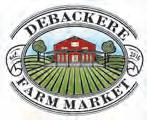



is a testament to creativity, dedication, and meticulous planning. Set design has the ability to make or break a production. With imaginative set design, the audience will remain engaged throughout the play. They’re Found In Trees by Norm Foster is currently on the stage until July 13 and is set under the boughs of a huge American Beech tree located at the Bay of Fundy National Park, New Brunswick. The tree is the anchor of the show serving not only as the home base for the group of birdwatchers but the symbol of our three characters coming together to form a different sort of family tree.
Based on the rendering from
that is made of 2x4s and plywood. It is made in two half’s that got stacked into each other. The wooden structure was then cladded or covered in cardboard and pool noodles. Finally covering the whole structure in installation spray foam. Exacto knives were used to carve and shape the foam, further refined using sandpaper and a rasp. The trunk was then painted with a combination of paint, durabond, and glue, creating a protective coat so it would not dent when moved and so actors could touch the tree. A dark brown wash and dry brushing with a light colour and a green mossy colour was added.
continued on page 19


continued from page 18
Once the tree was fully carved in the shop it was brought on stage in its two halves and secured together and to the stage floor with screws. More spray foam was added on stage to hide the seam of the trunk and to merge the branches that were



hung from the grid to the tree base. For the branches Tim’s Tree Trimmings in St. Thomas was contacted to give freshly cut American Beech branches which were hung from the grid using rope. The leaves are faux silk and were purchased online and attached to the branches using florist wire.

“This set was a labour of love for myself and the entire crew (Kate Ingman – Assistant Production Manager / Head Carpenter, Emma Burnett – Scenic Painter / Assistant Designer, Jasmine Rajaballey – Assistant Carpenter, and Doug Cottrell – Prop Expert) and we are so excited about how it turned

out, especially in conjunction with Karen Crichton’s gorgeous lighting design. Past Artistic Director Simon Joyne’s final request for the show was that “the tree must be splendid.” I think we did him proud.” - Set designer Joe Recchia.

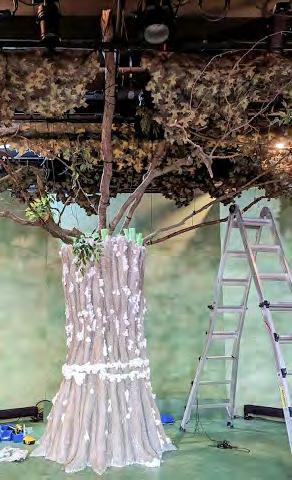



■ Ontario's Southwest Tourism


Port Stanley’s Main Beach is a long beach with one of the finest stretches of sandy beach on Lake Erie’s north shore. Just how great is it? Port Stanley’s Main Beach is one of only 22 in Canada to have earned official Blue Flag status for its commitment to strict water quality and safety criteria. Port Stanley also features mats to make the beach more accessible to people using wheelchairs or strollers. Looking for something a







little smaller? Head down the road to Port Stanley's Little Beach, where you will find 185 metres of secluded sandy beach and shallow water that's well protected by a berm.
Who will love it?
Families: Warm water temperatures and a sandy bottom that drops off gradually make this a great choice for kids.
Small Town Charm Seekers: The nearby downtown core features quaint boutiques, restaurants and cafes.




■ Elgin County Tourism
Watersports Enthusiasts: Good on-shore winds make Port Stanley a popular choice



With one of the finest stretches of sandy beach on the north shore of Lake Erie, the village is a very popular destination for day trippers and for those wanting to stay a little longer. Port Stanley’s uniqueness lies in natural attractions such as Kettle Creek and the multitude of leisure boats that frequent its banks. Port Stanley is home to the historic King George VI Lift Bridge, the oldest in Ontario, located in the centre of town.
Ride an authentic L & P.S. railcar, with Port Stanley Terminal Rail and enjoy a scenic view of Kettle Creek and the surrounding countryside. Open year round; be sure to take part in one of the many events on the train cars such as; Meet Stanley the bear, Easter Bunny
Train, Murder Mysteries, and many more! Its great fun for the whole family!
Spend a day in Port Stanley’s picturesque downtown core! Visitors will be delighted by the numerous quaint boutiques that dot the streets, and by the delicious culinary treats that await them at Port Stanley’s many dining establishments. Spend an afternoon or evening at the Port Stanley Festival Theatre located in the centre of the village. The season runs from May-September and highlights Canadian works in drama, comedy and musicals. Port Stanley is also home to an active artist’s community, several art galleries, and an annual art show.
Spend a day on the links at one of Port Stanley’s two Golf Courses.



■ by Joe Konecny
Central Elgin council agreed June 24 to include pickleball courts in plans to build a new park in the Kokomo Beach Club community being built by Wastell Homes and Melchers Construction on George Street, in southwest Port Stanley.
Council’s decision downplayed municipal staff’s concerns “there will be a high potential for complaints from residents regarding the noise generated by the play at the pickleball courts.”
Instead, council appeared to support strategies to manage noise from the courts including: requests that sport enthusiasts use quieter paddles and balls; installing noise-baffling fence panels; and restricting hours of use to avoid early morning and late evening play.
The Kokomo Park plan was first presented to council in 2021, calling for CE to cover $700,000 of the $980,000 cost. Wastell is to cover the remainder. The plan includes four



pickleball courts, a parking area, playground equipment, pathways, benches, game tables, and green space.
Julian Novick, Wastell’s Director of Building Operations, told council that park construction would be done in two phases, with the first phase to begin this year. Phase one will include the pickleball courts and playground equipment. Phase 2 will add walkways and green space.
During CE’s public consultation on May 16, 27 responses were received, with nine opposed to the pickleball courts due to concerns about traffic, parking, and “at play” noise. However, a Wastell survey of the community found that 84 percent of residents supported pickleball courts, while 16 percent opposed.
“Staff have gathered compelling evidence from other municipalities in Ontario that have experienced challenges with similar installations,” according to a report to council penned by CE Manager of Parks and Facilities Mike Wigzell, Director of Infrastructure and
Community Services Geoff Brooks, and Chief Administrative Officer and Clerk Carey Herd.
“Specifically, residential neighborhoods in Grand Bend and Niagara-on-the-Lake have faced significant issues after the installation of pickleball courts, primarily due to noise complaints from local residents,” the report continues. “In Grand Bend, council was compelled to shut down the newly installed courts after persistent complaints about the noise generated by the game, particularly in the early mornings and late evenings.
“Similarly, in Niagara-on-the-Lake, the introduction of pickleball courts led to ongoing disputes between residents and court users, eventually resulting in the courts’ closure and subsequent attempts to find solutions through noise attenuation measures.”
Staff had instead recommended either removing the pickleball courts from the Kokomo Park plan and considering an alternative location, or pausing park plans until the recreation and trails masterplan is completed.










■ by Joe Konecny
Three cabin cruisers worth between $20,000 and $50,000 each were destroyed by fire on Kettle Creek in Port Stanley just after noon Saturday, June 15, in a blaze that pumped putrid chemical fumes and a large plume of black smoke into otherwise sunny skies.
Two of the fiberglass vessels were melted down to their waterlines despite the valiant efforts of neighbouring boat owners who attacked the flames with fire extinguishers but were turned back by heat and smoke.
Central Elgin Fire and Emergency Services crews from Port Stanley, Union and Yarmouth Centre eventually doused the fire with water.
Parts of the docks at Kanagio Yacht Club were also burned, however no one was injured and a number of boats moored nearby were untied by club members, and allowed to float across the creek to other empa-

Winds from the south fanned the flames of a blazing cabin cruiser in Port Stanley. Two other boats to the north also caught fire. The scene was in Kettle Creek north of the harbour early Saturday afternoon, June 15. Fire Chief Ray Ormerod said the blaze may have started in an electrical panel. It was deemed a “non-suspicious” fire.
(Janice McClenaghan photo)
“It’s all the glue and chemicals that cause it to go up (burn) extremely quickly,” said Chief Ormerod. Gasoline spilled from the boats was allowed to dissipate and evaporate, he added, reflecting the advice provided to him by the Canadian Coast Guard, the Ontario Ministry of the Environment, Conservation and Parks, as well as the Ontario Spills Action Centre.
Janice McClenaghan of Port Stanley noticed the smoke at about 1 p.m. when she was driving home from the beach.
thetic mariners.
Fire Chief Ray Ormerod said before it was engulfed, a lone sailor exited one of the vessels after noticing smoke com-
ing from an electrical panel. Attempts to secure the panel failed. OPP Constable Brett Phair said it was deemed a “non-suspicious” fire.
“The wind was from the south so the two boats on the north side of the initial blaze caught fire,” said Mrs. McClenaghan. “I was at the Kanagio fire before the fire department trucks got there and stayed for two hours. Two boats basically melted. My vehicle was trapped by hoses on the road.”
Hubert Van Niekerk Sr., 73, a retired special education teachcontinued on page 23


continued from page 22
er from London who owned the 1986 Trojan 36 next to the source of the fire, said he was at home and got the news by telephone.
He bought the boat as a retirement project about four years ago on the recommendation of his son Hubert Van Niekerk Jr., and repaired and restored the hull from top to bottom. “It’s been a work in progress,” he said in an interview on Monday. He hadn’t even had a chance to name the vessel.
“I don’t think you can ever be close to completing a project like this,” said Mr. Van Niekerk. “If you get one thing done, it’s time to do another thing. That’s part of the enjoyment of owning a boat.

“I guess I won’t be needing that toilet I was shopping for in the online forum,” he added with a chuckle. “You have to look at it with a sense of humor, don’t let it get you down.”
But Mr. Van Niekerk admits he will miss his “floating cottage. I really enjoyed it.” He’s likely to buy another. “That’s the intention. We’ll see how it goes.”


The first ever Indian Canadian community fundraiser took place on Sunday, June 9 at Parkside Collegiate Institute supporting the STEGH Foundation’s Transforming Tomorrow Campaign. Over 500 people attended the event and they raised $5300 for the STEGH Foundation. The Indian Canadian event offered free entry and free food supported by many local sponsors including Classic Touch Car Wash, Granger Fuels, Port Stanley Shell Gas Station, Ambe Electric, Umbrella Tents & Events, Punnet Kumar and Gurtaj Singh Khangura. (Contributed photo)



■ by Brian Williams, Local Journalism Initiative Reporter, London Free Press
June 11, 2024 - An updated economic report projects St. Thomas’s population will grow to about 80,000 by 2051.
Watson and Associates Economists Ltd., a Mississauga-based economic consulting firm, was retained in 2022 to prepare a population, employment and housing forecast by St. Thomas to consider updates to the city’s official plan.
Following Volkswagen’s 2023 announcement it would build a $7-billion EV battery plant in St. Thomas scheduled to open in 2027, the firm was again retained to re-evaluate its report.
Projections in the updated report increased significantly from the consulting firm’s initial forecasts.
“My only comparison would be between 1871 and 1881 when the railways came to St. Thomas,” Coun. Steve Peters said. “The population in 1871 was about 1,800 people and by 1881 it was 10,000 people.”
In 2022, Watson and Associates projected the city’s population to increase from 47,500 to 65,100 between 2026 and 2051.
After the re-evaluation, the firm estimates the city will grow from 48,600 in 2026 to 79,500 in 2051. Statistics Canada’s census recorded 43,000 residents recorded in 2021.
At Monday’s meeting, Adam Fischer, presenting to council on



behalf of Watson and Associates, said the city’s projected population growth of 36,500 over the next three decades “would really suggest St. Thomas is one of the fastest-growing municipalities in the province.”
growth, Moffatt said, “The city of London as of 2023, had a higher population than what was forecast in the London plan for the year 2035.”
Moffatt said cities like St. Thomas and Woodstock’s growth stems more from people moving from other places in Ontario such as Toronto.
St. Thomas Mayor Joe Preston said he’s happy with the city’s growth and that city council is up to the task of ensuring there will be enough homes for newcomers.
“We’ve got cranes in the air for the first time in forever and so we’re moving forward on it,” Preston said Tuesday. “It’s a daunting task that we feel up to, but there’s a lot of work to do over the next decade and more.”
On Tuesday, Peters said though the report was “focused in on St. Thomas,” he thought the city’s projected growth was indicative of the region.
Mike Moffatt, an economist and assistant professor at Western University’s Ivey Business School, said the London region “is one of the fastest-growing places in Ontario or in Canada.”

Highlighting the Forest City’s
Fischer said Watson and Associates employment forecast projected about 16,000 new jobs by 2051, about half of which are anticipated in the industrial sector. The Volkswagen plant is expected to employ about 3,000 people, but indirect employment is expected to add 3,000 positions. Watson and Associates projected the city would need to address housing also.
The report’s initial estimates indicated 9,400 homes would need to be built between 2021 and 2051 to keep up with population growth, a figure that jumped to 15,300 following the firm’s reassessment.
Moffatt said an official plan that’s realistic about population growth and lays out how growth is expected over the long term is crucial for expanding communities.
“We’ve guaranteed the employment, now we just have to keep working on the rest of the stuff that goes with a growing community (like) housing, parks and roads,” Preston said.

■ by Jim Innes
I understand the attraction the engagingly fuzzy, childishly awkward, forgivably bristly, and charmingly rugged (so I say) bearish type. But unfortunately, people are shocked when the bear makes his rumbling noise, when the bear is a bit of, well, a bear.
projections people place upon its intent. So when the bear loses a bit of control, a lot seems to be happening.

I want to share something that is becoming important to me as I approach retirement as a Christian leader. I’ll begin with a true story.
The apostle Paul’s mission was to spread Christianity, where the name of Christ had never been heard. It was incredibly challenging, involving travels spanning over 10,000 miles and facing numerous dangers. His journeys on land and sea primarily took him through present-day Israel, Syria, Turkey, and Greece—an exhausting trek some 1,950 years ago.
As a foreigner in unfamiliar lands already entrenched with their own political and spiritual customs, Paul faced rejection and experienced multiple incarcerations (some say up to 7). Despite persecution and imprisonment, he somehow managed to convey powerful, liberating spiritual ideas, including the famous words from prison: “I can do all things through him who strengthens me.”
I am truly inspired by Paul’s unwavering trust in God and the courage he derived from it. This trust was not a miraculous gift reserved for selected individuals chosen by God for specific reasons but stemmed from his sense that his life was guardedly embraced--someone (some power) had his back.
Over the years I’ve come to terms with some of these dynamics, including my occasional tendency to grunt and grumble. Here is how I see it.
Throughout my 37 years in ministry, I have faced numerous challenges and experienced many successes. Yet, despite my resilience, I often find myself becoming anxious over minor setbacks. I want what Paul had: a deep sense of being held protectively—feeling safe.
The bear symbolizes strength and confidence. It’s admired. Its presence inspires respect. This is good! But the bear persona is also a perfect mask for uncertainty. And when the weaker bear awakens, bearish power loses strength, replaced by an overreaction that induces fear.
Paul found this safety from faith in a good God who watched over him. Others may find it from family and friends. But wherever it comes from, if we want to live less anxiously, we all need to find that sense of safety (come what may).
Some people try to find security by relying only on themselves, but it’s impossible to have control over everything. When we attempt to do so, we come up against a system where many others also have their needs. This can result in manipulative behaviour and even violent conflicts over practical matters. (even though we all basically want the same things).
Many people seek the safety of a tribe, finding security in numbers. Yet, the situation in the Middle East shows us the potential flaws in this approach.
As I approach retirement, it’s incredibly important for me to establish a feeling of safety free from any manipulation or conflict. Security has been a persistent issue for me since my childhood, a time marked by
The bear in me, in us, is a real power. Among Native Americans, bear represents “extremely strong medicine including special powers in the areas of wisdom, strength and healing”. The bear signifies courage and a deep connection to earth. Despite the bear’s power, and likely because of its power, the bear can trigger shame. Some of this shame arises within us (the bears) when we have been a little scary to others. But a lot of shame can be provoked in others (the bear’s friends) who take our growls to
traumatic fear. This issue has manifested in my relationships and health, and I am determined to overcome it.
More than one book on native spirituality claims, “If the bear shows up in your life, it may also be time to take care of your own needs for healing, whether it’s at the physical, emotional or spiritual level.” I take this to mean that if my bearish growl abruptly shows up, I need to take time for reflection and self-care, mostly focusing on my own inner process.
It needs be said, that the growl is not automatically anger (as many suspect, or at least conjecture). The growl is but a provocation that can connect to any number of feelings and thoughts. After all, the bear, for all its power, is not necessarily the animal with the highest EQ (emotional awareness).
“While we can’t shield ourselves from life’s uncertainties, I believe that cultivating inner security can help us ease overwhelming stress and anxiety. Paul had it, and I want to experience it too. Like many others, I’m tired of constantly anticipating the worst, too often exacerbating situations with my impatient fearful reactions. I want to live in a way that no matter what happens, I can stay grounded, peaceful, kind and creative.
How achievable is this at this stage in my life? After years of bending my mind in certain ways, can new thoughts and new reactions take hold? Is it my destiny to become a grumpy old man, forever tired and surrounded by only my dog? If so, at least I can count on my dog to never disagree with me and to always be excited about naps.
It’s hard to be a bear, and I recommend Henri Nouwen’s book, The Wounded Healer, to any of you bears interested in learning more about your latent power to heal. In the meantime, all I can say is, “We are who we are”, and if you happen to be a bit of a bear, then God grant you the grace to see your strength, unearth your power, and with but minimal guilt, manage your effect on others.
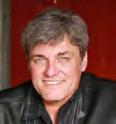
Jim Innes is a clinically trained therapist who served for many years as a priest at St. John’s Anglican in St. Thomas.
Jim Innes is a clinically trained therapist who served for many years as a priest at St. John’s Anglican in St. Thomas.
■ by Duncan Watterworth
I got looking at the mishmash of stuff and words on my dresser. Flotsam and jetsam that seem to cling. Does yours reveal bits of your soul?
My dresser top 12 June 2024
• covered with a coarse woven cloth purchased in Ecuador 1976
• headlamp; black toque; tick remover
• 30-year-old driftwood painted “I love you dad -Brooke”
• “Best Grandpa Ever” card from grandson Max, painted handprints
• coaster: Leap And The Net Will Appear
• photo of my arm around a woman in India, both in turbans and smoking beedis.
• my grandfather’s Hohner harmonica, in its box
• my hand-written instruction card: “Recognize, Accept, Investigate, Non-attachment. Stand up straight. Activity improves mood. Mindfulness determines quality of experience-quality of life.”
• mushy cards from my wife
• photo of daughter Brooke hugging me warmly
Loose papers
• scrap of paper: “I feel God’s finger on my dimmer switch”
• Utah Mormon Genealogy Center card: my username and password.
• scrap of paper: Hueston music recommendation: Terry Allen and the Panhandle,
• sympathy cards re: my mother’s recent death
• CBC radio book mention: “Your Brain On Art”
• scrap of paper: “The mayfly speaks of impermanence” from a sign in a woods near Lions Head.
• Taoism and Buddhism: brief note on the differences: immersion in the flow v. distancing from suffering.
• NY Times article about economist Daniel Kahneman, who decried academic

dialogue aimed at destroying an adversary’s position, and embarrassing them. (Like most political debate.)
• Notes from the free, weekly TheMarginalian.org. (friend Shelley turned me on to this “digest of mind-broadening and heart-lifting reflections spanning art, science, poetry, philosophy…)
• notes from a David Brooks’ YouTube presentation on maintaining an interesting conversation
• copies of several Mary Oliver poems. (Try: “The Summer Day”, “When Death Comes”, and “I Worried”.) (I recently read in the Marginalian: “Poetry can break open locked chambers of possibility, restore numbed zones of feeling, recharge desire.”)
• a sampling: “How To Retire Happy, Wild, And Free” (I have given copies as gifts); “Man’s Search For Meaning”, Victor Frankl; “The Meaning Of Human Existence”, Edward O. Wilson (late Harvard biology professor); “Sharing Nature With Children”; “The Power Of Hab-


it”; “Younger Next Year” (fitness); four books by Alan Watts (Eastern philosophy proponent and rogue); “Wilderness At Dawn” (the settling of the North American continent); “Paint Colours” (CD by friend Walter Moffat); “Expedition To The Edge” (stories of worldwide adventure); “Coles Notes” (history ancient times to 1500);
• a holder of folders labelled: Soon, Recent, Old, Inspiration, Tech., Political, Musings, Music, Psych., Lines, Quotes, Peterson. Samplings from them:
• Old folder: lifetime list of kayak and canoe trips (about 48); article: The Canoe And Canadian Cultures
• Soon folder: review of Anthony Bourdain’s TV show, “Parts Unknown”; article: “I taught my 90-year-old dad how mindfulness works”.
• Psychology folder: “at death, ask: Was I in the game?”
• Musings folder: I am in search of Reality. We all are.; “Believe those who are seeking the truth. Doubt those who find it.”; My church: “The Church Of The Best Guess So Far”; “The world unfolds, more playful than purposeful, like a dance.”; My personal Life Purpose Statement.
• Quotes folder: “Be compassionate, for everyone you meet is fighting a great battle”; “It’s better to err on the side of excess,” Cam; “We are always at the beginning,” Willie Nelson.
• Inspiration folder: Mindfulness. Gratefulness. “Our proper business is curiosity and awareness”. Our part is to participate, to flourish.


Community Futures Ontario announced Abbey Taylor as the winner of the Outstanding Youth Entrepreneur Award at its annual conference, held in Sault Ste. Marie June 2-4, 2024. The former student and agricultural intern at the Elgin Business Resource Centre launched Dawn Farm in 2021 in the middle of the pandemic. The seventh-generation family farmer sells grassfed beef directly from her farm in Belmont.
After winning the Helen LeFrank Entrepreneurship Student Scholarship in 2019, Abbey earned her diploma in agriculture from Ridgetown College. She then enhanced her knowledge by working at a series of farms across Canada
during a five-month period to gain business experience. Having found happiness and success as a young entrepreneur, Abbey readily shares her story with youth, encouraging all, especially women, about the many opportunities that are available in the agricultural sector.
Elgin Business Resource Centre is one of 60 Community Futures Development Corporations in the province that offers free business counselling, loans for start-up and expansion of small business, strategic planning on local projects and community economic development in rural areas.
Each year, Community Futures Ontario, a program funded by the Government of Can-

ada to facilitate rural economic development, recognizes the successes and impact of Community Futures Development Corporations. In 2024, they pre-
three
Entrepreneur of the Year, Outstanding Youth Entrepreneur, and Award of Excellence for Community Economic Development.
